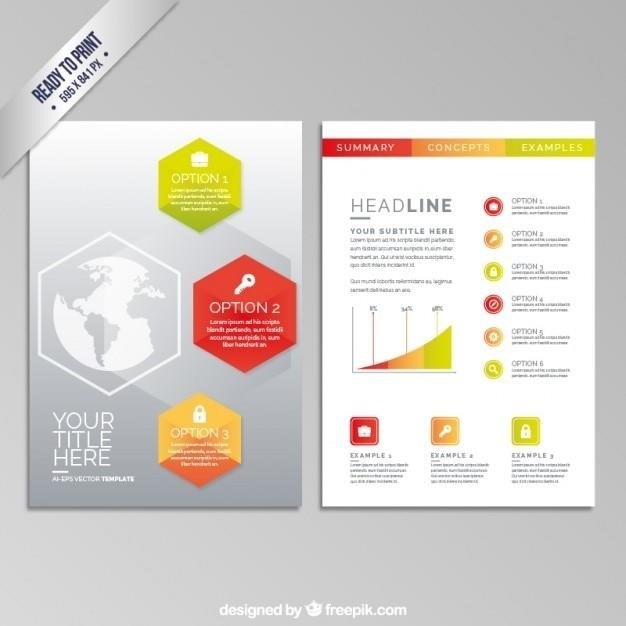
aami st108 pdf
AAMI ST108⁚ An Overview
AAMI ST108⁚2023, a crucial standard for healthcare, establishes requirements for water quality in medical device reprocessing. Replacing AAMI TIR34, it provides binding requirements, ensuring patient safety and equipment longevity. This standard is essential for preventing healthcare-associated infections and maintaining optimal device functionality.
AAMI ST108⁚ Key Changes from TIR34
AAMI ST108 represents a significant advancement over its predecessor, AAMI TIR34. While TIR34 offered valuable guidance on water quality for medical device reprocessing, it lacked the binding force of a formal standard. ST108 elevates these recommendations to mandatory requirements, establishing minimum quality thresholds for water used at various stages of the process. This shift from guidance to regulation underscores the critical role of water quality in preventing healthcare-associated infections (HAIs) and ensuring the efficacy of sterilization procedures. The new standard introduces more stringent criteria for water purity and testing methodologies, demanding a more rigorous approach to water management in healthcare settings. Furthermore, ST108 places greater emphasis on the design, maintenance, and monitoring of water treatment systems, highlighting the need for proactive measures to prevent contamination and ensure consistent water quality. This increased focus on system integrity aims to minimize risks and improve the overall safety and reliability of medical device reprocessing. The transition from recommendations to mandatory requirements signals a crucial step toward improving patient safety and enhancing the effectiveness of sterile processing departments.
Understanding the Importance of Water Quality in Medical Device Reprocessing
Water quality plays a pivotal role in the safe and effective reprocessing of medical devices. Impurities in water, including microorganisms, endotoxins, and particulate matter, can interfere with cleaning, disinfection, and sterilization processes, leading to suboptimal results. Residual contaminants on reprocessed devices can pose significant risks to patients, potentially causing infections or adverse reactions. Maintaining high water quality is therefore crucial for preventing healthcare-associated infections (HAIs), which are a major concern in healthcare settings. Furthermore, water quality directly impacts the lifespan and functionality of medical equipment. Poor water quality can damage instruments, reduce the effectiveness of sterilization cycles, and shorten the operational life of expensive medical devices. By adhering to stringent water quality standards, healthcare facilities can minimize equipment damage and reduce replacement costs, thereby enhancing cost-effectiveness. The importance of water quality extends beyond immediate patient safety, affecting the overall efficiency and sustainability of healthcare operations. AAMI ST108 provides the framework for ensuring appropriate water quality, safeguarding both patients and healthcare resources.
Implementing AAMI ST108⁚ Practical Guidelines
Successful AAMI ST108 implementation requires a multi-faceted approach encompassing water quality selection, appropriate treatment systems, meticulous maintenance, and rigorous monitoring. This ensures compliance and minimizes risks.
Water Quality Selection and Categories
AAMI ST108 meticulously outlines water quality categories crucial for effective medical device reprocessing. The standard doesn’t merely recommend; it mandates adherence to specific water quality levels at each stage of the process, from initial cleaning to final sterilization. This rigorous approach directly impacts patient safety by minimizing the risk of contamination and ensuring the efficacy of sterilization procedures. The selection of appropriate water quality isn’t arbitrary; it’s determined by the type of medical device and the specific reprocessing step involved. For instance, the water quality standards for rinsing a delicate endoscope will differ significantly from those used for pre-cleaning a surgical instrument. The standard provides clear guidelines for choosing the correct water category to ensure the highest level of cleanliness and sterility, thereby reducing the risk of healthcare-associated infections (HAIs). Failure to adhere to these specifications can compromise the integrity of the sterilization process, potentially leading to serious patient complications. Therefore, understanding and implementing these guidelines is paramount for maintaining optimal patient safety and ensuring the effectiveness of medical device reprocessing.
Water Treatment Systems and Maintenance
AAMI ST108 emphasizes the critical role of water treatment systems in achieving and maintaining the required water quality for medical device reprocessing. The standard doesn’t just specify water quality; it delves into the systems responsible for delivering that quality. This includes detailed guidelines on the design, installation, and operation of these systems. Regular and meticulous maintenance is paramount, as outlined in the standard. This maintenance isn’t merely about occasional checks; it’s a continuous process involving regular monitoring, testing, and, when necessary, prompt repairs or replacements of components. The standard highlights the importance of documenting all maintenance activities, ensuring complete traceability and accountability. Failure to properly maintain these systems can lead to a decline in water quality, compromising the effectiveness of the reprocessing cycle and increasing the risk of infection. Properly maintained systems, however, ensure consistent delivery of water that meets the stringent requirements of AAMI ST108, contributing significantly to patient safety and the reliability of medical device sterilization processes. The standard also stresses the importance of selecting appropriate treatment technologies based on the characteristics of the source water and the desired level of purity.
Monitoring and Testing Procedures
AAMI ST108 mandates a comprehensive monitoring and testing program to ensure consistent water quality throughout the medical device reprocessing workflow. This isn’t a one-time check; it’s an ongoing process of vigilance. The standard details specific parameters that must be monitored regularly, including microbiological counts, chemical contaminants, and physical properties like pH and conductivity. Frequency of testing depends on factors such as water source, treatment system, and the types of devices being processed. The standard emphasizes the importance of establishing a robust testing schedule and adhering to it meticulously. It also outlines acceptable limits for each parameter, providing clear criteria for determining whether the water meets the required standards. Any deviation from these limits requires prompt investigation and corrective actions. Documentation of all testing results is crucial, forming an auditable trail that demonstrates compliance with AAMI ST108. This documentation should include details of the testing methods used, the results obtained, and any corrective actions taken in response to deviations. The standard also highlights the importance of using validated testing methods and properly trained personnel to ensure the accuracy and reliability of the results. A well-defined monitoring and testing program, as outlined in AAMI ST108, is essential for maintaining water quality and minimizing the risks associated with contaminated water in medical device reprocessing.

Compliance and Risk Management
AAMI ST108 emphasizes proactive risk assessment and mitigation strategies for water quality in medical device reprocessing. Compliance necessitates robust documentation, staff training, and regular audits to ensure adherence to the standard’s requirements, minimizing risks to patient safety.
Risk Analysis and Mitigation Strategies
AAMI ST108 necessitates a comprehensive risk analysis process to identify potential hazards associated with inadequate water quality in medical device reprocessing. This involves evaluating various factors, including the type of medical device, the reprocessing steps involved, and the potential for microbial contamination or equipment malfunction stemming from poor water quality. The analysis should consider the potential impact of these hazards on patient safety and the effectiveness of the reprocessing procedures. Based on the risk assessment, appropriate mitigation strategies should be implemented. These strategies could include selecting appropriate water quality levels based on the specific needs of the devices being reprocessed. Implementing and maintaining effective water treatment systems, along with regular monitoring and testing procedures, are crucial for mitigating identified risks. Furthermore, establishing clear roles and responsibilities within the multidisciplinary team responsible for water management helps ensure consistent compliance with the standard. Regular review and updating of the risk assessment and mitigation strategies are necessary to adapt to changing circumstances and technological advancements in water treatment technologies. Effective communication and training of all personnel involved in the reprocessing process is key to successful risk mitigation. By adopting a proactive approach to risk management, healthcare facilities can significantly reduce the likelihood of adverse events associated with compromised water quality during medical device reprocessing, ultimately enhancing patient safety and procedural efficacy.
Roles and Responsibilities of the Multidisciplinary Team
Effective implementation of AAMI ST108 hinges on a clearly defined multidisciplinary team with designated roles and responsibilities. This team should include representatives from various departments, such as sterile processing, biomedical engineering, infection prevention, and facility management. The sterile processing department plays a central role, responsible for the day-to-day operation of water treatment systems and adherence to water quality parameters. Biomedical engineering is crucial for the installation, maintenance, and repair of water treatment equipment. Infection prevention specialists contribute expertise in microbial control and risk assessment, ensuring procedures minimize the risk of contamination. Facility management oversees the building infrastructure that supports water distribution and storage, ensuring compliance with the standard’s requirements. Each team member should receive appropriate training on AAMI ST108 requirements and their specific responsibilities. Clear communication channels and regular meetings are essential for effective collaboration and problem-solving. A designated team leader or coordinator should be identified to ensure accountability and facilitate the team’s overall effectiveness. This structured approach promotes clear ownership and shared responsibility, leading to optimized water quality management and enhanced patient safety.

AAMI ST108⁚ Resources and Further Information
The official AAMI ST108 PDF can be accessed through the AAMI website. Additional resources, including related AAMI standards and educational materials, are available to support implementation and understanding of the standard’s requirements.
Accessing the AAMI ST108 PDF
Obtaining the official ANSI/AAMI ST108⁚2023 PDF requires accessing the Association for the Advancement of Medical Instrumentation (AAMI) website. AAMI’s online store is the primary source for purchasing the standard. The document is typically available in electronic Adobe Acrobat PDF format, facilitating easy download and storage. While some standards are offered in hard copy from alternative vendors like Amazon, the official AAMI store offers the most up-to-date and reliable version. Ensure you are purchasing from a legitimate source to avoid counterfeit documents. The AAMI website also provides details on pricing and purchasing options. Before purchasing, review the details on the AAMI website to confirm the PDF is the correct version. This ensures you are working with the most current and accurate guidelines for water quality in medical device processing. Remember, using an outdated version can lead to non-compliance and potential risks.
Additional AAMI Standards and Resources
Beyond AAMI ST108, several other AAMI standards offer valuable information related to medical device reprocessing and water quality. AAMI ST79, a comprehensive guide to steam sterilization, is highly relevant, particularly concerning steam quality and related testing procedures. Similarly, AAMI ST98 addresses water and cleaning processes for medical devices, offering complementary guidelines to ST108. The AAMI website serves as a central hub, providing access to these standards, along with technical information reports (TIRs) and other resources. These resources often include guidelines, best practices, and additional details that expand upon the core requirements outlined in ST108. Exploring these additional resources allows for a more comprehensive understanding of best practices in medical device reprocessing and water management. AAMI also offers training and educational sessions, providing opportunities to learn more about these standards and their practical applications. This ensures healthcare professionals can effectively implement these standards to improve patient safety and device processing efficacy.